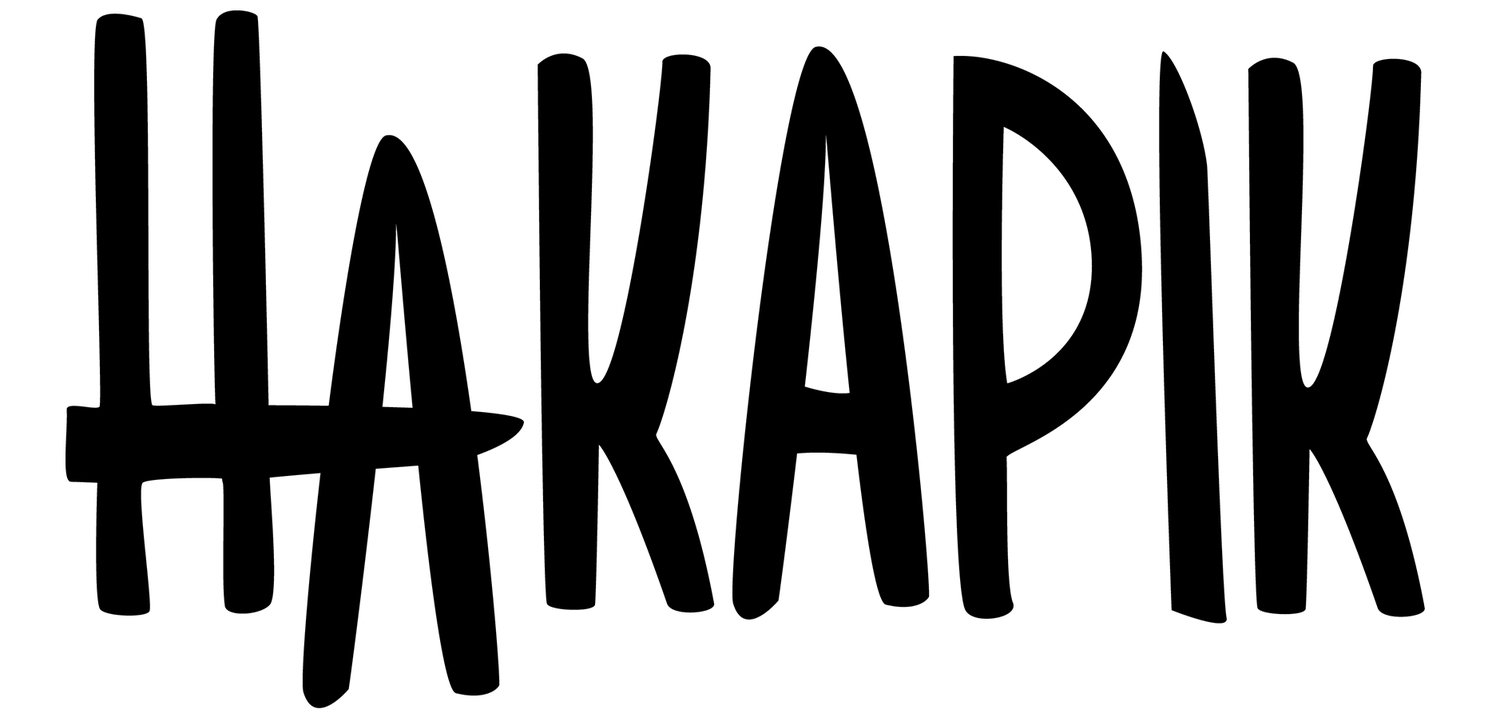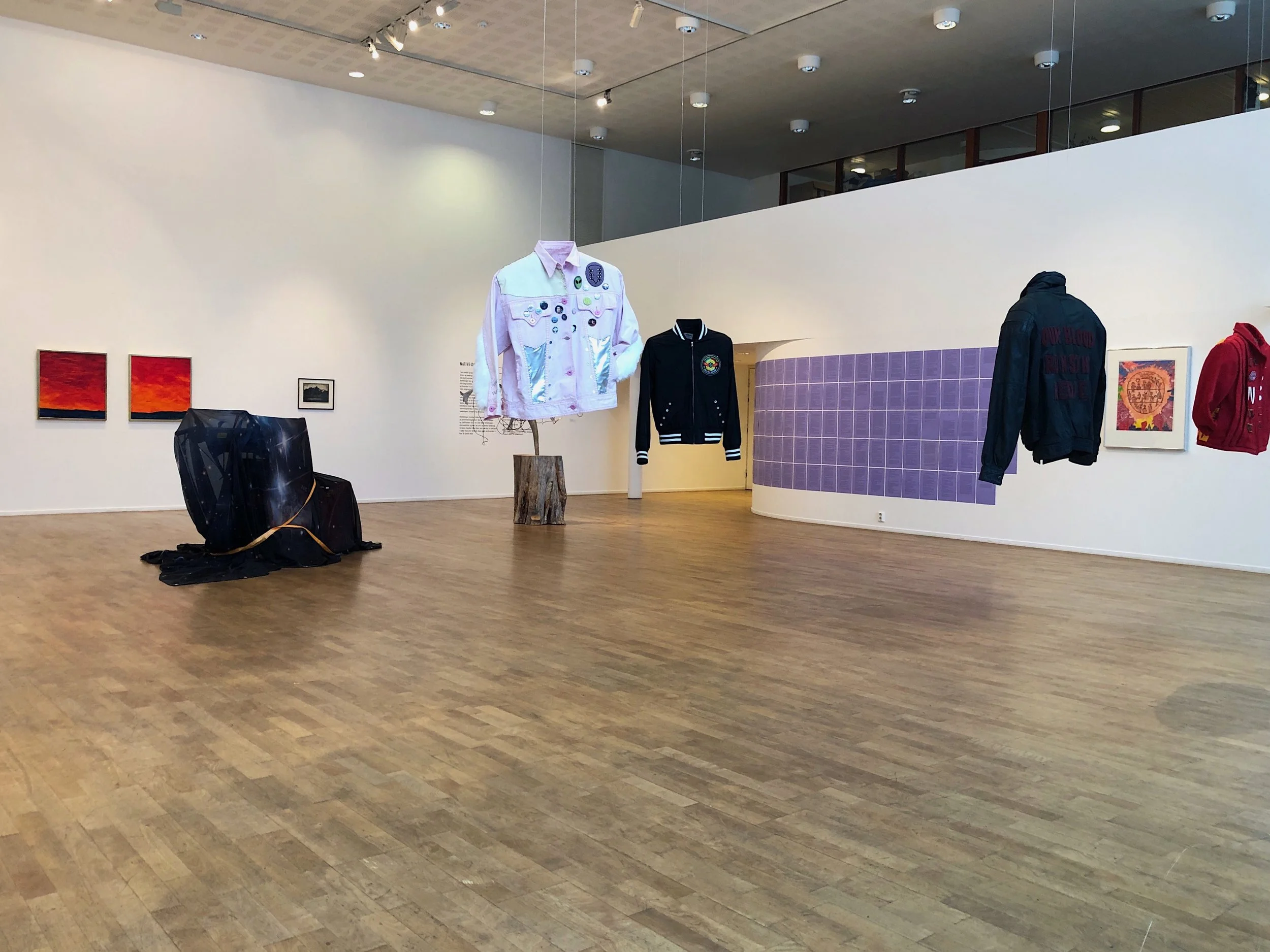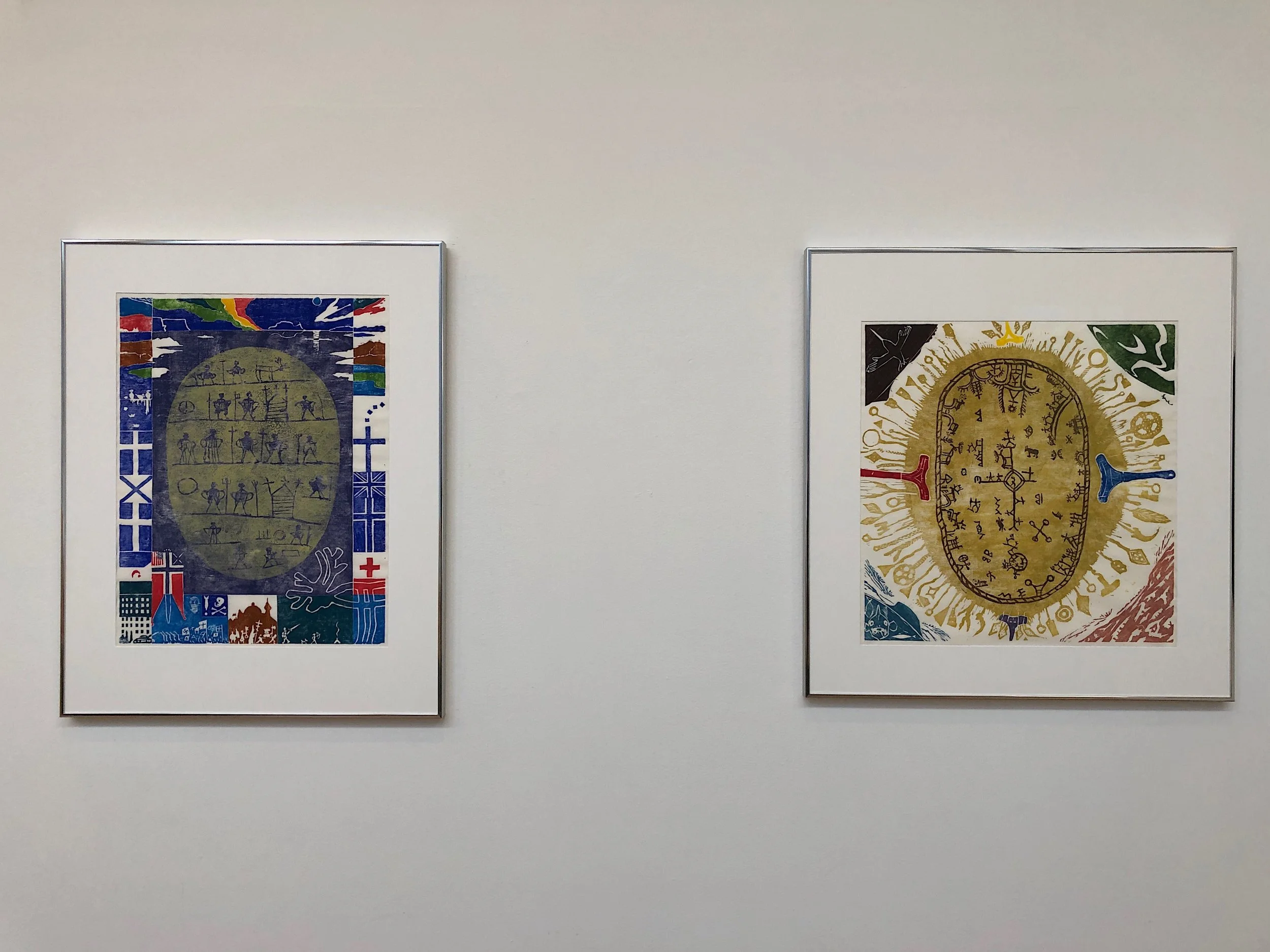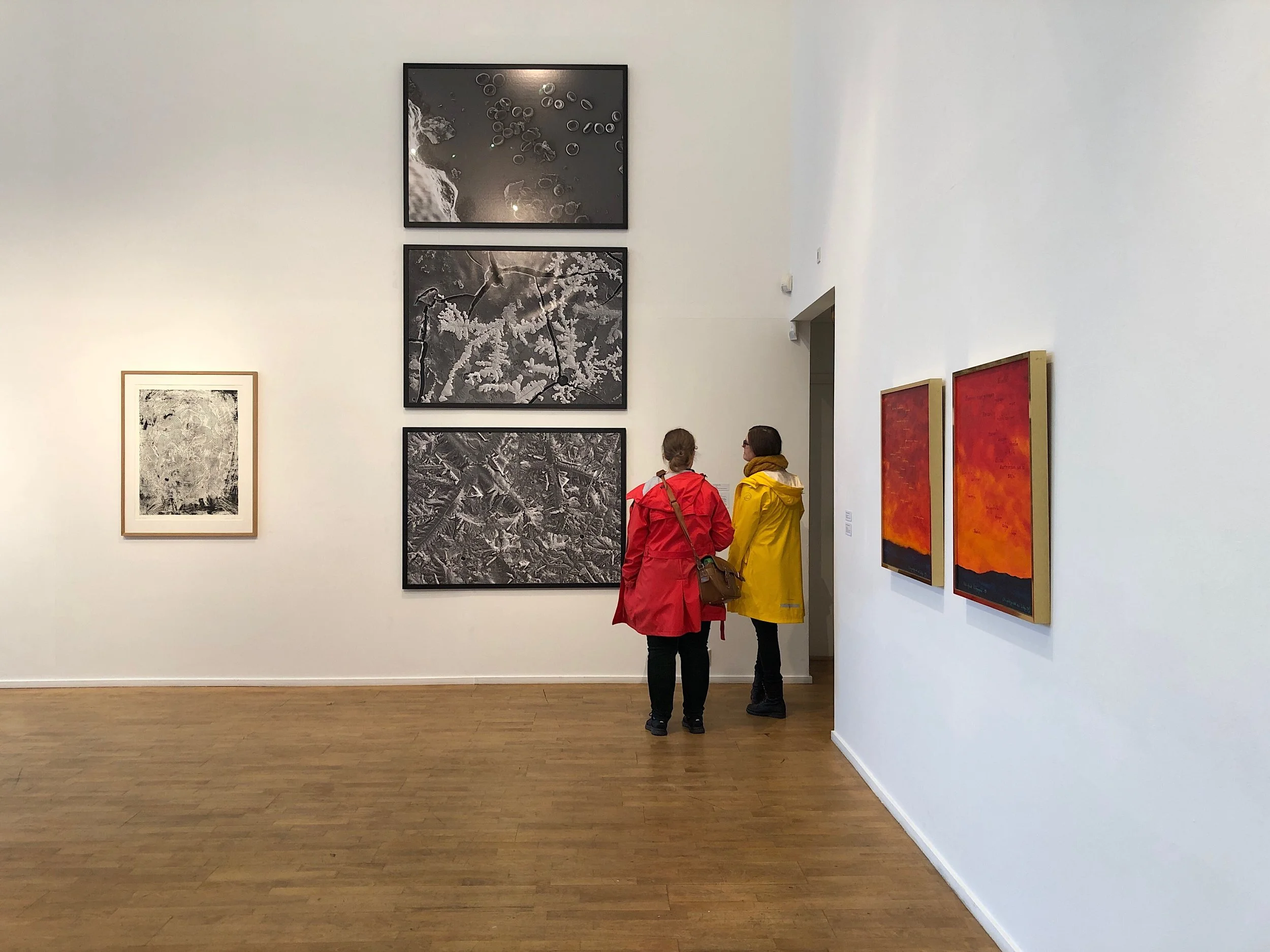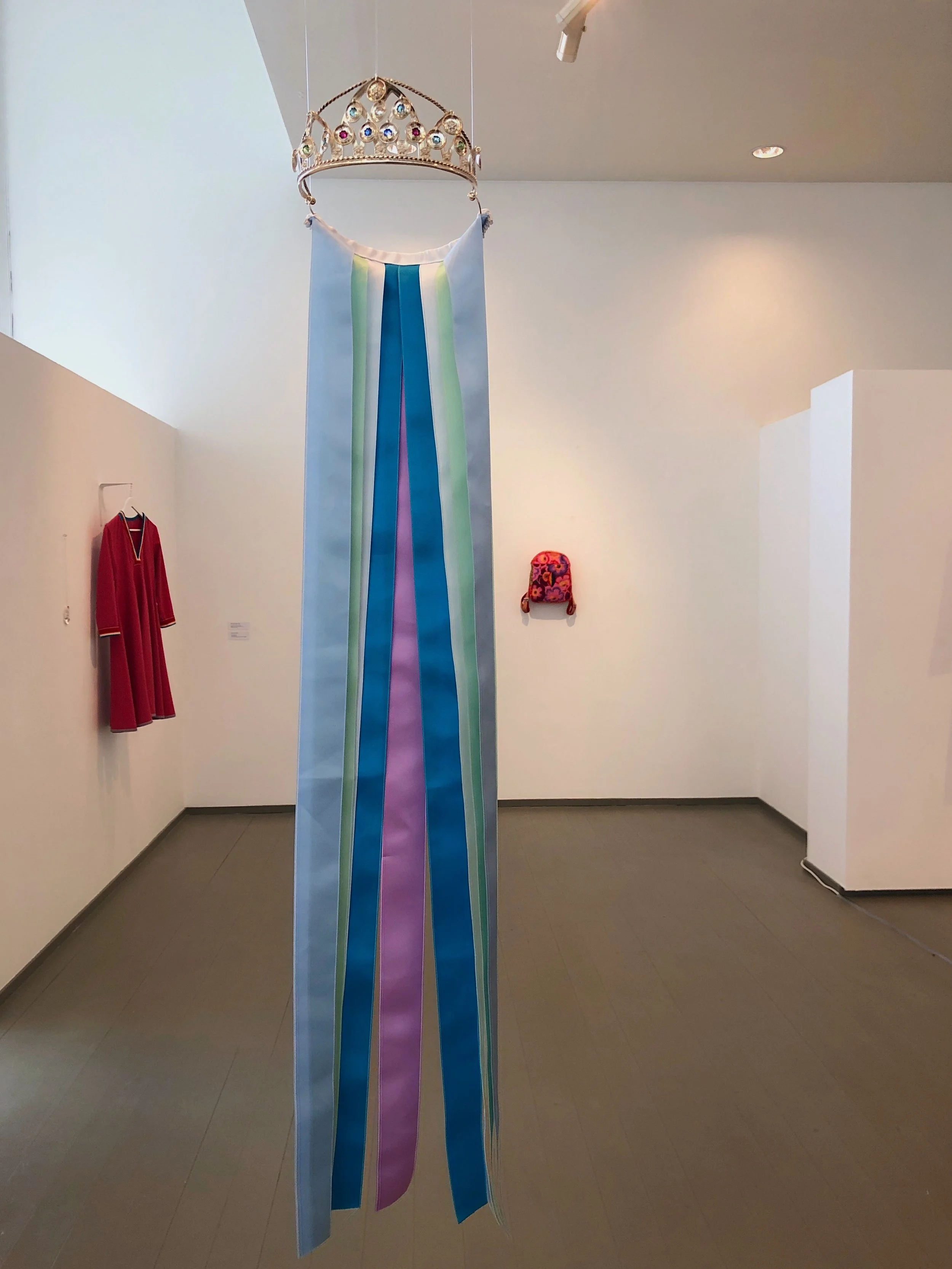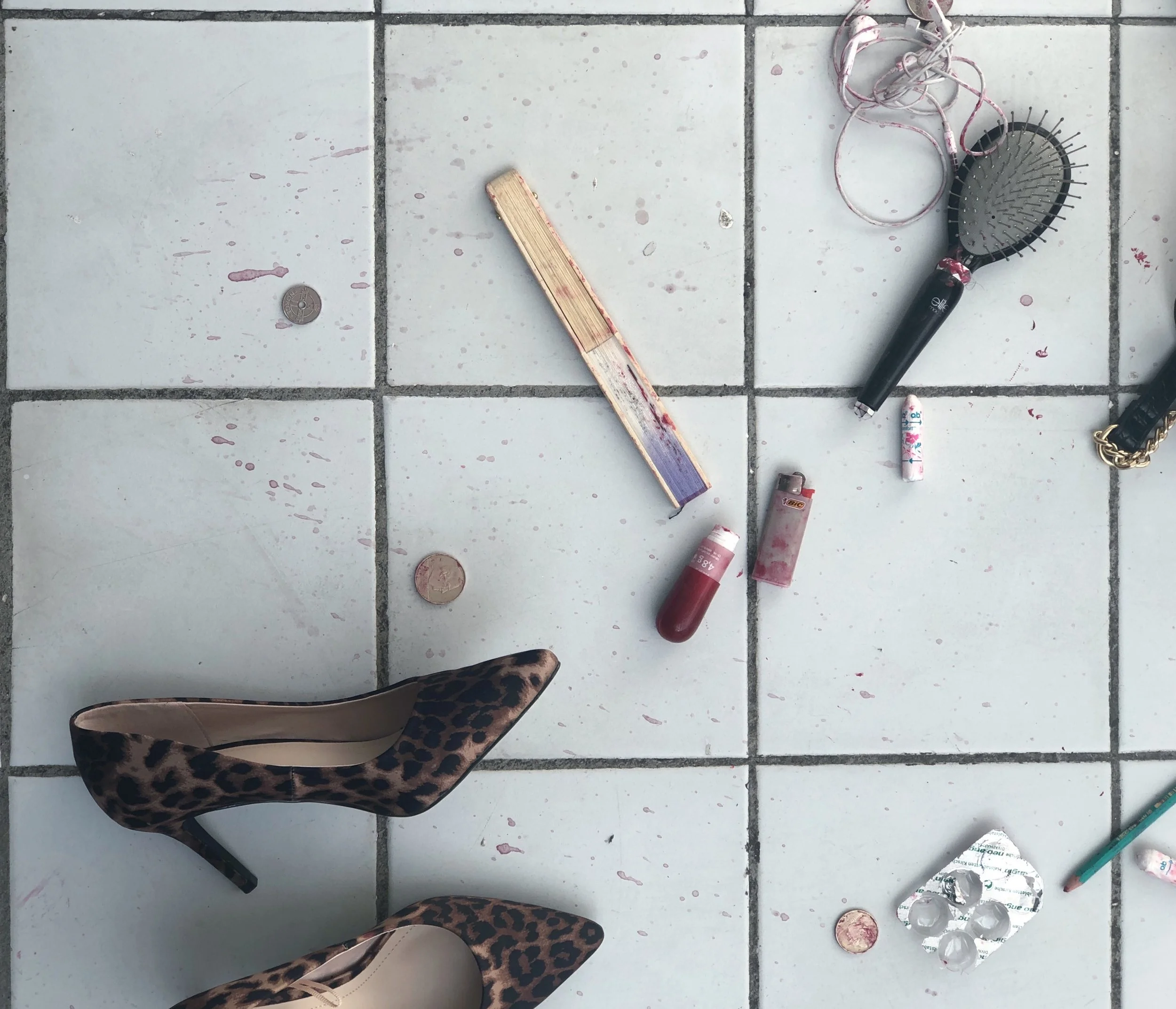Shelters of Hope in the Global Storm
Review of Native@home - Festival exhibition at The Arctic Arts Festival 2019 (Festspillene i Nord-Norge), Galleri Nord-Norge, Harstad, 22.06.2019 – 29.06.2019.
Written by Marion Bouvier
If a house is not a home, and when ancestral lands have been seized, colonized, and continue to be desecrated, where is home to be found? When divisive politics threaten to pull us apart, exposing our wealth of diversity to capitalistic and xenophobic attacks, how can we find a common roof under which to rest? These are the questions that the group exhibition Native@home dares to address, in a frontal but not confrontational way: with poetry, strength and a sometimes flamboyant creativity, which gives the viewer a shared sense of empowerment with the artists presented.
Photo: Hilde Sørstrøm
My exploration of the exhibition started backwards, in the farthest room of the gallery, when I entered the queendom of Merrit Johnson’s works: five videos displayed on TV screens. Playing on the homonymy between the words ‘exercising’ and ‘exorcising’ in American English, Johnson’s works take their formal inspiration from the popular workout/tutorial format that many Youtube videos follow, with a touch of cooking videos thrown into the mix. But instead of instructing her audience on how to achieve the ultimate beach body or cook the perfect sushi dinner, the artist tutors on ‘Water Safety Exercises’, ‘Not Biting the Hand That Feeds You’, or ‘How To: Shake Hands with Water’. At the core of all the videos is a sarcastic, and often absurd, take on how the relationship between humans and the land they inhabit has been distorted and often completely severed, in large parts as a direct consequence of colonization.
Merritt Johnson’s video Exorcise Global Health: Knowing the Ropes (2019) premiered in the festival exhibtion. Photo: Hilde Sørstrøm
Reinventing our relationship to land
Merrit Johnson specifically addresses the U.S.A.’s relationship to land, and the need to fight the damage done to Native American peoples and their lands, through what looks like a set of creative–and desperate–measures. For example, in the digital video Exorcising America: Water Safety Exercises (2016) she instructs how to clean contaminated water from oil spills by taking in the pollution directly from the water into one’s mouth, and spitting it out. In so doing, she not only denounces the harm done to the environment since the time of Christopher Columbus, but she also points out that the entity that is in real need of ‘safety exercise’ is not Man but Nature. There is a lot of humor in those videos, but it’s a humor that has tragic undertones to it: the need to laugh when one is almost devoid of hope.
The exhibition Native@home is one of the increasingly numerous artistic (but also political) endeavors that focus on native peoples’ rights and their necessary inclusion in re-defining the collective future. In that sense, what Johnson’s videos teach us is that knowing and respecting one’s land and the people who have known it the longest, is a good start to tackle climate change. Or at least it can give us a good inkling of how our mentalities, and not just our habits, need to be shifted when it comes to the environment.
A selection of Merritt Johnson’s series Exorcising America was shown in the exhibition. Photo: Hilde Sørstrøm
I only regret that Johnson’s works were installed in a very white-cube fashion, with few high-tech TV screens displaying the Youtube-quality videos in a way that felt a bit stiff and at odds with the content itself. The only exception being the brand new video Exorcising for Global Health; Knowing the Ropes (2019), which was projected on the wall. Besides, only 5 of the 37 related videos I found on her Youtube-channel were on display, which gave a rather limited sample of her body of work. I would have wished for the exhibition design to reflect that profusion and the Youtube feel of her videos, maybe with sofas and pillows on the floor and tablets available to browse through Johnson’s collection of videos. Or numerous smaller screens on which the rather low resolution of the videos would not become as obvious, and chairs to sit on to relax into the tutorial instead of having to ‘stand through it’.
A slightly dissonant choir of powerful voices



Back to the main room, the exhibition showcases sculptures, paintings and installations, many of which are borrowed from the Sámi Dáiddamágasiidna (Sami Art Collection). We journey from the intricate and delicate embroidered details of Whess Harman’s futuristic punk jackets, to the captivating depths of our blood cells and sweat’s salt crystals in Tanya Busse’s colossal photos taken under a microscope, and with a detour through the iconic graphic works of Hans Ragnar Mathisen, who mixes runebommer (Sami shamanic drums) patterns with evocations of contemporary times, in monotypes on paper that are powerful in their visual honesty. Walking through the gallery, I was seduced by the quality of each individual work, but left slightly disappointed by the lack of ensemble feeling of the whole.
To the right; Ajamoste aajmoste/Nuppi Ilmmis nubbái (1995). Woodcut, monotype on paper. To the left; Geafes ráfi (1995). Woodcut, monotype on paper. Both by Hans Ragnar Mathisen. Photo: Hilde Sørstrøm
It is of course always difficult to build a collective exhibition in a way that feels cohesive as well as respectful of the artists’ individualities, but it is nonetheless one of the elements I missed in Native@home, all the more since the thematic of ‘dialogue’ was at the heart of the concept of the exhibition, as emphasized by curator Carola Grahn and art historian Mathias Danbolt in the conclusive discussion held on the last day of the festival. Undeniably, there was a conceptual quest for dialogue behind the exhibition, notably with the choice of artists from various generations, ethnic and national backgrounds, as well as gender expression. Yet in practice, this intergenerational and transnational blend felt more like a layered juxtaposition than the glorious artistic exchange I had expected.
That feeling of lack of dialogue I can only tentatively explain by once again a rather barren installation set-up, which could have benefited from being shaken up a little bit more. I was also disappointed to see that Tanya Busse’s large photography works, Blood, Sweat and Tears (2019), had been exhibited in vertical succession, making the highest one difficult to see – and for such a fascinating insight into what makes up our bodily fluids, one would have wanted to be at eye-level with the material.
Gallery visitors looking at the series of three ink jet prints that make up the piece Blood, Sweat and Tears (2019) by Tanya Busse. To the left is Arnold Johansen’s graphic work Maske 3 (2013) and on the wall to the right is Nils Aslak Valkeapää’s paintings Beaivi (1995). Photo: Hilde Sørstrøm
A nomadic home for the future?
Taking residence on the upper mezzanine, the dazzlingly queer Sámi Girl Gang made a nest of their own, working on their new collection and exhibiting finished models. Their handmade creations revisit Sami identity with a contemporary twist: amongst their stunning works, one could admire the “festivalgákti” a traditional Sami clothing adapted to all weathers thanks to its waterproof fabric, a beautiful magenta gákti adorned with a rainbow flag at the back of its collar, a ‘Gollegákti’ described as a “bling-bling-kofte sydd til Jokkmokks marknad” (bling-bling-Samí clothing sewn for Jokkmokk’s fair), or a flowering backpack proudly sporting a rainbow-colored vulva patch. Seemingly at home with ancestral traditions as much as with contemporary identity politics, the Sámi Girl Gang really made a home for their nomadic hearts in the otherwise slightly sterile Galleri Nord-Norge.
Sámi Girl Gang performing in the mezzanine of Galleri Nord-Norge. Photo: Hilde Sørstrøm
So what is a home? A body made of stardust, atoms and crystals that hosts all our emotions and experiences? Detailed drawings, books old and new, drawn and written in the lonely hours when everything is uncertain, and shared in joy with others to tell the stories that shaped us and our relations to our surroundings? Or maybe collections of possessions that can be carried along long distances and unpacked any time a new camp has been set? Maybe a little bit of all of these; and also, the hope that makes people fight against the odds for a renewed connection to nature when money seems all powerful, for the celebration of diversity when elites try to play the divide-to-conquer game, and for sensuality in the face of a technology-dominated future.
As I left the exhibition, I could not help but thinking back on one of my favourite quotes, from Carl Sagan’s “Pale Blue Dot” speech:
Look again at that dot [planet Earth]. That's here. That's home. That's us. On it everyone you love, everyone you know, everyone you ever heard of, every human being who ever was, lived out their lives. The aggregate of our joy and suffering, thousands of confident religions, ideologies, and economic doctrines, every hunter and forager, every hero and coward, every creator and destroyer of civilization, every king and peasant, every young couple in love, every mother and father, hopeful child, inventor and explorer, every teacher of morals, every corrupt politician, every "superstar," every "supreme leader," every saint and sinner in the history of our species lived there--on a mote of dust suspended in a sunbeam.
In short, although I have formulated potential areas that could have made the exhibition better in my eyes, I have to say that I have been impressed by the work of artist-turned-curator Carola Grahn, who brought together a wild bunch of exciting artists, with a special mention for the Sámi Girl Gang and their embodied vision of art-as-life. May we continue (re)creating a home for each and all beings on this planet.




